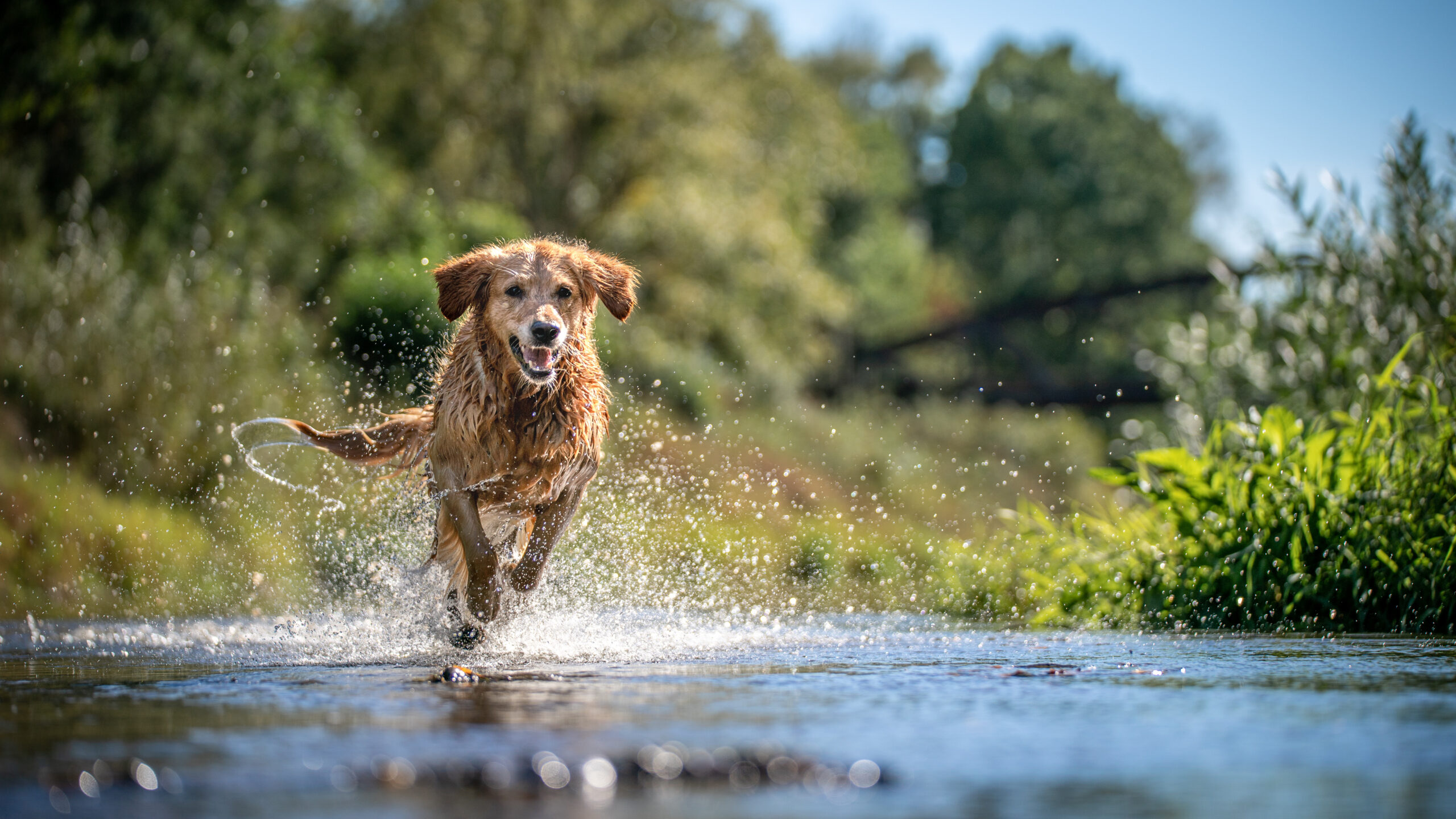
Summer means warmer weather, perfect for dog walking and being outside more. However, it is important to always consider the temperature outside before walking your dog, is the ground too hot for the pads/paws or will walking cause them to pant excessively and lead to heat stroke.
Once you’ve decided the temperature is suitable and planned your walk, it may include some areas with water, such as lakes or streams, to allow your dog to swim and cool off or play with a ball in the water. There are a range of hazards associated with water and problems caused by these are seen much more often in the summer. Let’s explore the hazards, the potential problems that could arise and the ways you can keep your dog safe.
Is it safe for my dog to swim?
Firstly, does the area look safe for your dog to enter the water and are there also suitable areas for them to climb out of the water without needing help. Is the water too deep for them? Are there dangerous currents, whirlpools, or rip tides? Does it look safe enough for them to swim? If your pet has been swimming or drinking from any areas of water and they become unwell, please seek advice from your vet.
Blue green algae
You may have heard of blue green algae in the press, but it is important to understand it when it comes to water safety. Blue green algae are not really algae, but are actually bacteria (Cyanobacteria), common in lakes, ponds and other fresh water sources. These bacteria are present throughout the year, but in summer and hotter temperatures blooms occur, growing more quickly and forming green or brown clumps in water, or scum on the surface. Swimming in contaminated water leads to deposits on the fur, which your pet may lick off, or they may drink the water directly. There are various types of blue green algae, and if you are unsure whether your dog has ingested any it is important to contact your vet.
Symptoms can include vomiting, diarrhoea, drooling, weakness, seizures (fits) or even collapse. In some dogs it may be fatal. The toxins in blue green algae stop the liver from working properly.
How to avoid it?
Often there will be signs warning of contaminated areas, so avoid letting your dog swim in or drink from the water, or in any areas that look suspicious to you. Please be aware that it can also be poisonous to humans, so do not try to touch the water or enter it at all. You can contact the Environment Agency on their incident hotline – 0800 80 70 60 – if you spot any suspicious water areas.
What is the treatment?
There is no specific treatment for poisoning – it is mainly symptomatic treatment to help detoxify the body. If you think your dog has ingested any blue green algae, please get in touch with us for immediate advice.
Secondary drowning
Secondary drowning can occur when your dog has been swimming in the water with their mouth open, allowing water in, or if they have been playing fetch in water and taking in water in that way. Small amounts of water can enter the lungs and add up over time. Your pet may appear fine immediately after swimming, but they need to be monitored closely – within 48 hours or so they can start to show signs of fluid building up on their lungs.
Symptoms can include lethargy, vomiting, coughing and breathing problems.
How to avoid it?
If your dog simply ingests too much it can occur, so try to carry fresh water in a bottle and bowl so you can give your dog suitable water as needed. swimming in general may be required for those dogs who always swim with their mouths open, as well as avoiding boisterous play (e.g. fetch) in water where dogs may inhale the splashes.
What is the treatment?
Please contact us as soon as possible if you suspect secondary drowning, treatment is supportive to help clear fluid from lungs and help breathing.
Saltwater poisoning
Sea water is full of salt and if your pet drinks too much it can lead to dehydration. This occurs when the blood has too much salt in it, and the body naturally tries to correct the balance. The body releases water from cells into the bloodstream, which can make your dog feel dizzy and lethargic and this leads to further signs.
Symptoms can include; lethargy, excessive thirst, excessive urination, vomiting, diarrhoea, muscle tremors, seizures, and it can lead to death.
How to avoid it?
Make sure to monitor your dog to ensure they don’t drink sea water, offer them fresh water regularly to ensure they are drinking that instead.
What is the treatment?
If your dog shows signs of becoming unwell then contact your vet for further advice
Summer usually means lots of nice days out with our pets, but it is important to remember the hazards that exist and try to avoid or minimise them. If you have any queries or need further advice, then please contact us and we will be happy to help.
References:
https://www.bluecross.org.uk/advice/dog/blue-green-algae-and-its-dangers-to-dogs Accessed 08/05/2024
https://www.vettimes.co.uk/summer-hazards-for-beach-dogs/ Accessed 09/05/2024
https://www.animalfriends.co.uk/dog/dog-advice/dog-first-aid/water-safety/ Accessed 09/05/2024




